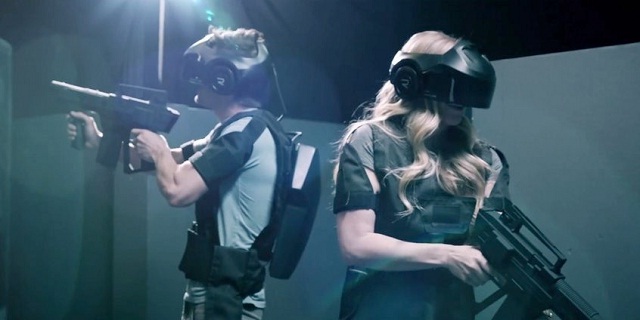My attention was caught recently by a whitepaper from Juniper Research, titled ‘eSports – Gamers’ New MVP?‘, which goes into detail to examine today’s fast-growing ‘electronic sports’ scene. These are games played competitively on a PC or console, in most cases against other players. While originally they were mostly played for bragging rights, today millions of dollars are sunk into tournaments as prize money, with the best players earning a living from the scene.

Coincidentally, Juniper’s whitepaper appeared in my inbox while I was at BlizzCon, in California: a massive two-day event dedicated to games from a single developer, Blizzard Entertainment. Blizzard’s best-known eSport, Starcraft, is so popular in South Korea that it is widely considered to be the country’s national sport, like football in the UK or ice hockey in Canada: it is played in stadiums, in front of huge crowds of fans. The world final, played at BlizzCon, was so busy that it had to be streamed to other screens around the Anaheim Convention Centre, because the arena was packed out, wall-to-wall. Busier than a Samsung press conference!
Blizzard also publishes other competitive games, including Hearthstone, Heroes of the Storm and Overwatch (set to be released next year), two of which already have thriving eSports scenes. Earlier this year a Heroes tournament, Heroes of the Dorm, became the first eSport event to be aired on cable TV in the USA, on ESPN2, and in October the BBC showed highlights of the League of Legends quarter finals in Wembley Arena. Meanwhile, dedicated game streaming website Twitch has more than 100 million unique monthly viewers, and YouTube has branched into the same arena with its YouTube Gaming sub-site. The League of Legends finals beat the final round of the Masters, the NBA and the World Series for viewing figures.
What this signals is the rise of eSports as a means of entertainment. Heroes of the Dorm might not have scored record viewing figures (Nielsen estimates that 0.1% of the TV viewing audience watched the final), but ESPN declared itself happy – and Juniper predicts ever-increasing levels of participation, estimating that 313 million people will watch eSports in 2020.
One of the biggest advantages of eSports’ popularity, for the display market, is its tech-savvy audience. Gamers put great value on their screens, especially favouring high frame rates, low latency and detail – HDR will be a key technology in the gaming market, as will 4k. Mostly this applies to PC monitors, as console and mobile games do not approach the audience of the PC player base. Still, TVs designed for gamers could have a place, especially with the new Steam Box consoles.
 The Void, a physical electronic gaming area in Saltlake City
The Void, a physical electronic gaming area in Saltlake City
Monitors and TVs are the ‘traditional’ gaming screens, but what about newer types, like smartphones and tablets? Currently, these devices are focused on more casual games that do not cater to an audience interested in competitive gaming. That could change, though, with the release of products like the Nvidia Shield. In addition, virtual reality is perhaps the technology with the highest potential to ‘make it’ in the eSports scene. Dedicated arenas, like The Void in Saltlake City (The Void Creates VR War Games…And Dragons), will merge eSports with the physical world, creating pitches in which the weapon of choice is the fireball, not the football.
Above, I mentioned that Starcraft is watched in sporting arenas in Korea, and other countries are seeking to join in. Last year, Major League Gaming – an international host of eSports tournaments – announced plans to build the world’s first dedicated eSports stadium in China, on Hengqin Island. As the world’s fastest-growing eSports market, China is positioned to absorb a massive amount of investment from organisations like MLG and ESL (eSports League) for new developments like the MLG Gaming Arena.
Of course, you can’t have several thousand people crowd around a couple of gaming monitors – think of the distraction to the players! These arenas, therefore, are also positioned to benefit LED display makers. Small pixel pitch LED screens will be needed to show viewers what is going on, presenting a significant opportunity for really big installations.
 What this all says is that eSports are here to stay. Incorporating elements of decision-making, strategy, economics and creativity, they can be used to train your brain to operate in new ways – and, because we’re not quite at the VR battle arena reality yet, anyone can play them.
What this all says is that eSports are here to stay. Incorporating elements of decision-making, strategy, economics and creativity, they can be used to train your brain to operate in new ways – and, because we’re not quite at the VR battle arena reality yet, anyone can play them.
Finally, to those who think that eSports can’t reach the emotional highs of traditional sports, I challenge you to watch this video (make sure to read the context first) and then come to same conclusion.
– Tom Allen

